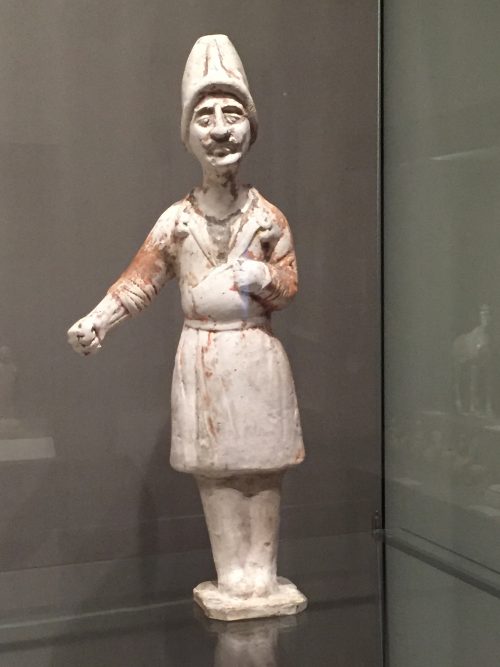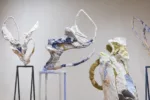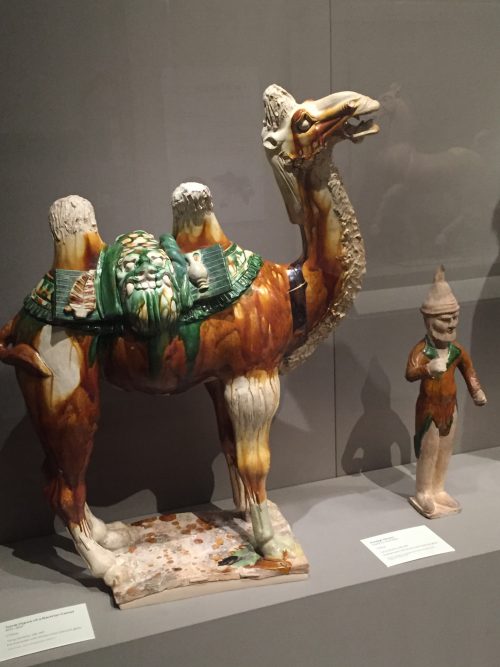
The first glass case in the newly-arranged galleries of Chinese Art at the Philadelphia Museum of Art (PMA philamuseum.org) contains a miniature clay figure of an Iranian horse groom from the Tang dynasty (618-907 CE). His facial features, splendid mustache, and clothing identify him as Sogdian, a culture in Western Turkestan that was heavily involved in trade along the Silk Road. In the same case are another figure of a Sogdian man with a rolled carpet under his left arm and a boy with curly hair and dress typical of Central Asia. Another display case opposite the entrance contains a large camel, with the cream, caramel and green glazes typical of Tang funerary ceramics; he is being lead by a foreign groom. This is not a Nineteenth or Twentieth Century story of distinct cultural formation, but a more complex narrative that acknowledges that international goods and cultural influences have been exchanged as long as recorded history. The new presentation offers the visual seduction of beautiful objects which are situated within a nexus of history, memory and international relations. They offer a broad view of Chinese art that should appeal to general audiences as well as specialists.
Around the corner a small room presents even earlier work: a carved relief from a Northern dynasties’ (386-581 CE) funerary couch and evocative, brooding photographs of a Western Han tomb (206 BCE- 8 CE) by the contemporary Chinese artist Taca Sui. Art of the past has always been a major focus for Chinese artists for whom copying both the form and style of classic works was more than mere training; the focus of scholar artists (literati) of the Ming was the copying of Song painting (969-1279), and an eighteenth-century Qing blue and white vase that is a copy of a fifteenth-century Ming example – its form, in turn, clearly influenced by earlier metalwork – are both on display.
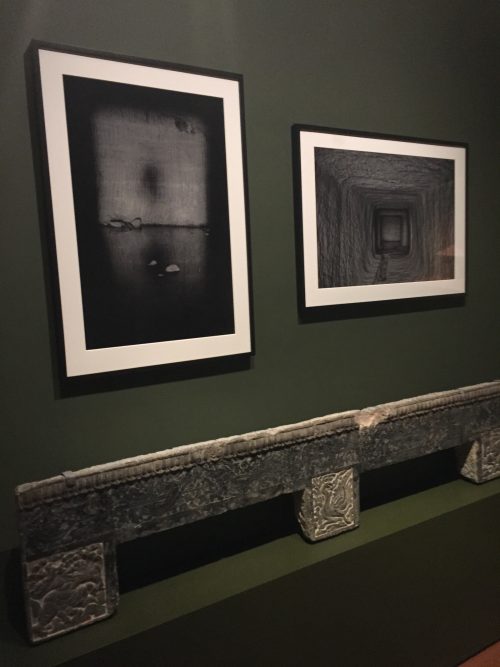
The labels contain reasonable and enticing information about the objects, and the beautiful, newly-published catalog, “Art of China; Highlights from the Philadelphia Museum of Art” Hiromi Kinoshita, ed. (PMA and Yale University Press, Philadelphia and New Haven: 2018) ISBN 978-0-300-23710-8, is available to peruse in the galleries (and buy in the museum shop), offering additional information for the curious visitor. It includes an interesting overview of the development of the museum’s collection and the role of both collectors and staff as well as catalog entries for ninety-eight objects. The catalog entries are clear narratives that address technique, use and presentation and the meaning of materials and imagery for each object – they are a pleasure to read.
Three existing works characterize the PMA’s exceptional presentation, its interior architectural ensembles: a 15th-century coffered ceiling from a structure built as a private residence and later turned into a Buddhist temple; the 17th-century reception hall from a Ming dynasty palace and the panels from a Qing dynasty (18th-century) scholar’s study. They reflect the views of two of the PMA’s early directors, Langdon Warner and Fiske Kimball, that period rooms provide the best context for display of museum objects, and there is nothing else like them in the U.S.
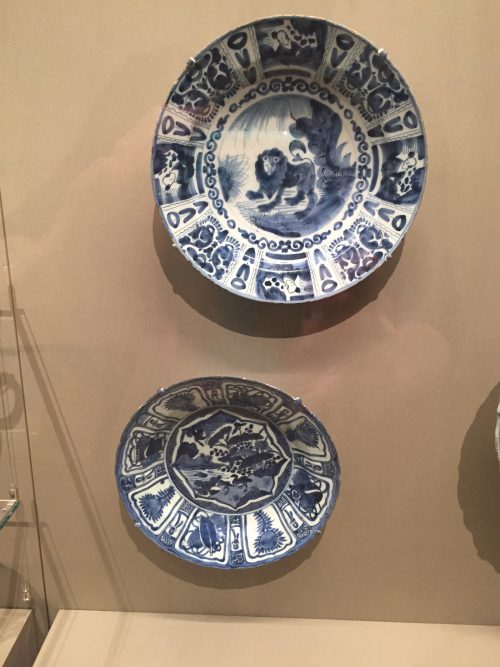
The central gallery along the Eastern side of the wing displays ceramics, which have been the most influential Chinese art form internationally. They were exported in large numbers to South Asia since the Song dynasty, and to Europe since the Sixteenth Century. Other cultures unsuccessfully attempted to match their technical properties for centuries. European and Mexican tin-glazed earthenware was an attempt to compete with the market for Chinese export ware, and it wasn’t until the Eighteenth Century that Europeans would master the production of porcelain. The installation includes several comparisons of Chinese works with European examples attempting to emulate them. Visitors can try to distinguish between French, 18th-century porcelain and contemporaneous Chinese porcelain, or a 17thcentury Dutch tin-glazed earthenware plate and a Chinese example in porcelain.
The Chinese galleries also include examples of sculpture, furniture, and a rotating selection of textiles and paintings, which are light-sensitive, so cannot remain on view for long periods. Their variety offers many surprises and delights; if the heavily-burled wooden document container in the scholar’s study doesn’t catch your fancy, the cloisonne dog cage sited in the reception hall might spark the imagination, and certainly reminds us that conspicuous consumption and cosseted pets have a long lineage.
